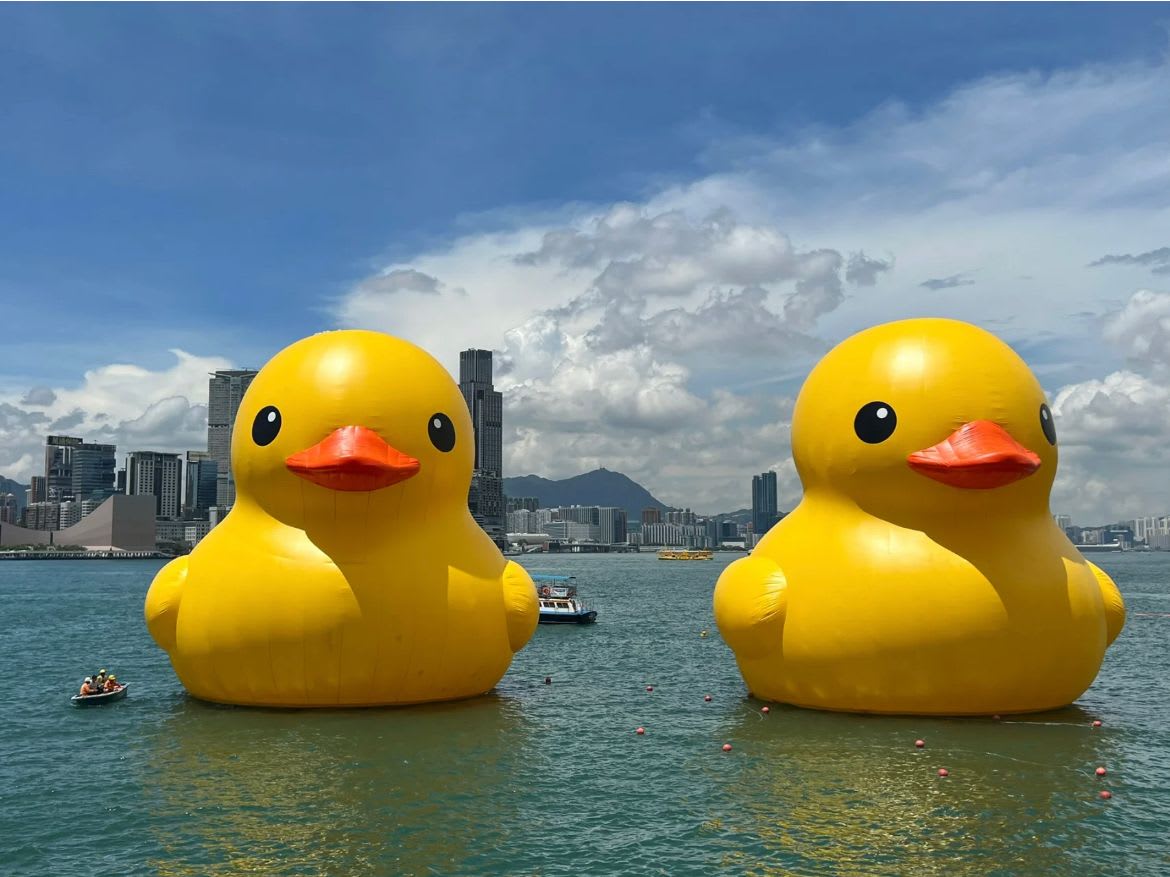Rubber Ducks Take Over the World: From the 1992 Spill to Viral Art Installations
Meta Title: The Rubber Duck Phenomenon: From a 1992 Spill to Global Pop Culture – Google News

Rubber ducks—those childhood bath toys—are suddenly everywhere. From beaches to city squares, and even on social media feeds, people are obsessed with placing rubber ducks in creative, sometimes bizarre locations. But why? The answer lies in a 30-year-old environmental disaster and the quirky ways modern culture has repurposed it.
The 1992 Rubber Duck Incident: How It All Began

On January 10, 1992, a cargo ship named the Ever Laurel lost a container during a storm off the coast of Alaska. Inside were 29,000 plastic rubber ducks and other toys bound for Walmart stores. The ducks, designed by artist Frolic, were swept into the North Pacific Ocean and began an unintended journey that would rewrite marine science—and inspire a global cultural phenomenon.
The Science:
-
The ducks became an unintentional experiment for studying ocean currents.
-
Over decades, they drifted to shores in Alaska, Hawaii, Australia, and even Antarctica.
-
By 2020, over 500 ducks had been recovered, providing critical data on transoceanic currents.
The Pop Culture Legacy:
-
The story inspired the book “Moby-Duck” by Donovan Hohn (2009), which detailed the ducks’ journey.
-
A 2011 BBC documentary called “The Great Pacific Garbage Patch” highlighted their role in environmental awareness.
Why Are Rubber Ducks Everywhere Now?

Fast-forward to 2023, and rubber ducks are no longer just bath toys—they’re invading public spaces as symbols of environmental awareness, nostalgia, and absurdity. Here’s why:
1. Environmental Activism
-
Plastic Pollution Awareness: The 1992 spill highlighted the dangers of plastic in oceans. Modern installations (e.g., a 2022 Berlin exhibition of 10,000 rubber ducks) draw attention to marine conservation.
-
Climate Change Messaging: Ducks placed in ice caps or melting glaciers symbolize the urgency of climate action.
2. Nostalgia and Childhood Imagery
-
Generational Connection: People born in the 1990s/2000s grew up with plastic ducks. Installations evoke nostalgia (e.g., Tokyo’s “Ducktopia” in 2021).
-
Social Media Trends: Hashtags like #RubberDuckRevolution and #DuckTrend encourage users to post photos of ducks in unusual places.
3. Art and Public Engagement
-
Urban Art Installations: Artists like Florentijn Hofman (famous for The Giant Rubber Duck) use oversized ducks to spark conversations about public space and joy.
-
Interactive Exhibits: Museums (e.g., The Exploratorium in San Francisco) host duck-themed events to teach oceanography.
4. Humor and Absurdity
-
Satirical Statements: Placing ducks in corporate logos or political symbols (e.g., Duck-in-the-Boardroom memes) critiques capitalism.
-
Internet Memes: “Duck logic” memes (e.g., “Why are ducks the best philosophers?”) flood TikTok and Reddit.
The Rubber Duck Economy: From Tragedy to Trend

The 1992 spill’s legacy has spawned new industries:
-
Eco-Friendly Toys: Brands now sell biodegradable or recycled rubber ducks (e.g., EcoDuck Co.).
-
Tourism: “Duck hunting” tours invite travelers to search for original 1992 ducks (though most are long gone).
-
NFTs and Digital Art: Digital “virtual ducks” are sold as collectibles on platforms like OpenSea.
Critics and Controversies
Not everyone loves the duck trend:
-
Environmental Backlash: Critics argue that plastic duck installations contradict calls to reduce plastic waste.
-
Cultural Satire: Some see it as a shallow trend that ignores deeper oceanic issues (e.g., “Ducks in the Ocean ≠ Solutions to Pollution”).
Conclusion: Ducks as Mirrors of Modern Society
From a 1992 environmental disaster to today’s viral art, rubber ducks have become a symbol of human ingenuity—and irony. They remind us that even accidents can spark curiosity, creativity, and activism. Whether you see them as nostalgic relics or environmental beacons, one thing is clear: the duck has quacked.
If you want to customize your rubber duck or other rubber toys, silicone toys, please contact us -YDX. We have over 20 years of production and manufacturing experience, providing silicone products suitable for baby materials, which are non-toxic and environmentally friendly. Click here to contact us directly!





 86-592-5659128 (to8016)
86-592-5659128 (to8016) anna@xmydx.com
anna@xmydx.com sallyliao1985
sallyliao1985 xmydx02
xmydx02 +86-13606037597
+86-13606037597